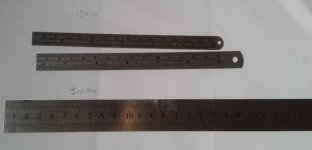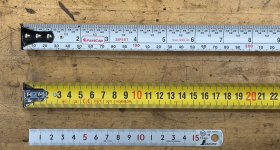DoctorCroz
Member
- Joined
- Aug 24, 2022
- Messages
- 2
Metric is better. I said what I said.
I hope you guys throw out an idea or two, thanks in advance for any suggestions.
I recently made my first Festool purchase which was a Domino because it's perfect and I love it as much as my family. I also love that it's metric but of course, all my measuring tools are imperial, Starrett combination squares and tape measures.
What are your guys' favorite small speed squares/delve squares/thickness gauges that have units in metric - favorite in terms of price/accuracy, etc. Is there something that works just as well as a Starrett or Woodpeckers square? I'm not opposed to buying either but are there any others out there that would be advised? As an FYI, I'm not interested in converting over the Domino's stopblocks to imperial because I'd just generally like to use metric units as it works quite a bit better in my own head.
I hope you guys throw out an idea or two, thanks in advance for any suggestions.
I recently made my first Festool purchase which was a Domino because it's perfect and I love it as much as my family. I also love that it's metric but of course, all my measuring tools are imperial, Starrett combination squares and tape measures.
What are your guys' favorite small speed squares/delve squares/thickness gauges that have units in metric - favorite in terms of price/accuracy, etc. Is there something that works just as well as a Starrett or Woodpeckers square? I'm not opposed to buying either but are there any others out there that would be advised? As an FYI, I'm not interested in converting over the Domino's stopblocks to imperial because I'd just generally like to use metric units as it works quite a bit better in my own head.


